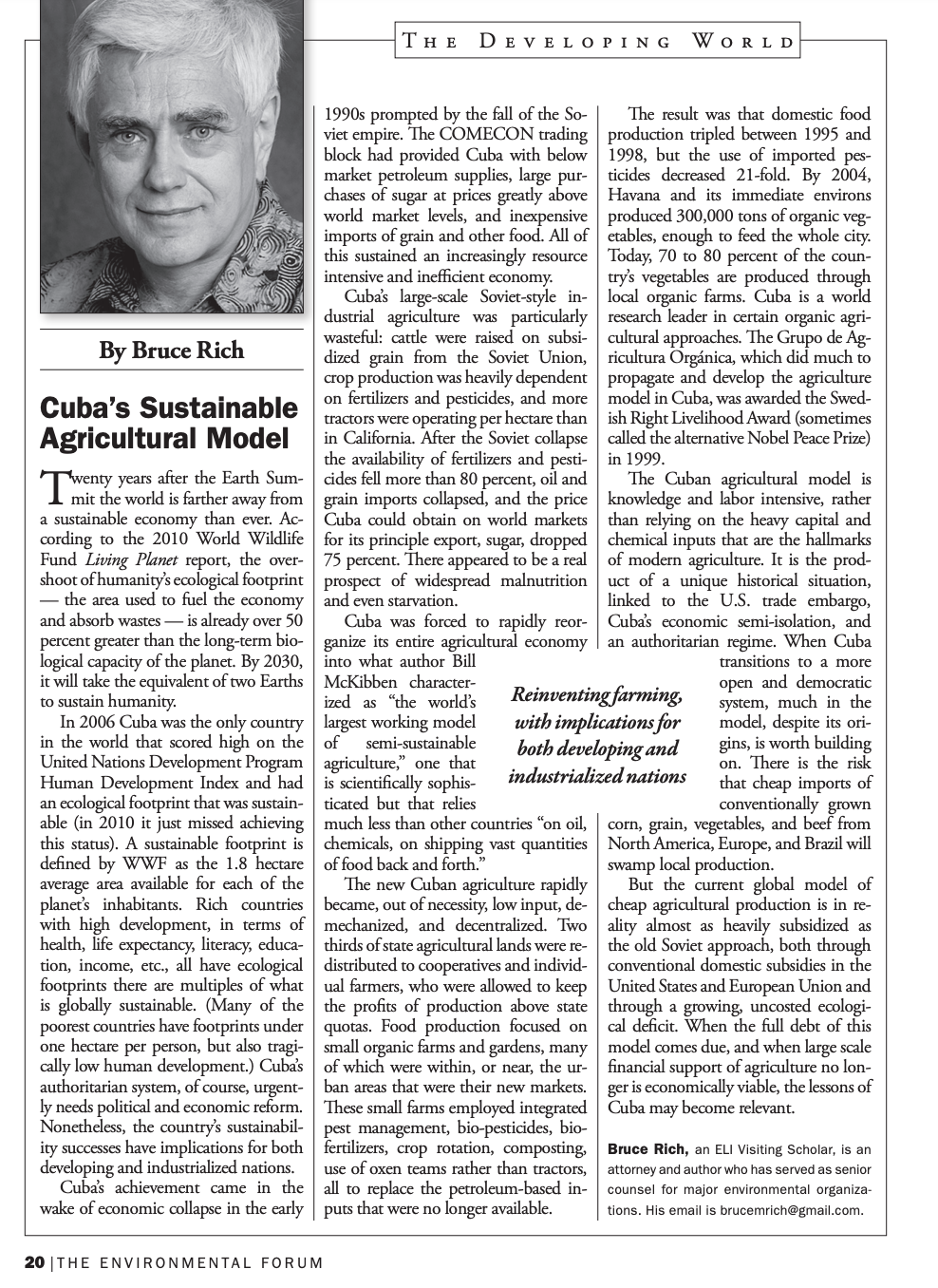- Bruce Rich
- Environmental Forum
- May-June 2012
- p. 20
According to the 2010 World Wildlife Fund Living Planet report, the overshoot of humanity’s ecological footprint — the area used to fuel the economy and absorb wastes — is already over 50 percent greater than the long-term biological capacity of the planet. By 2030, it will take the equivalent of two Earths to sustain humanity....Cuba was the only country in the world that scored high on the United Nations Development Program Human Development Index and had an ecological footprint that was sustainable....Cuba’s achievement came in the wake of economic collapse in the early 1990s prompted by the fall of the Soviet empire. The COMECON trading block had provided Cuba with below market petroleum supplies, large purchases of sugar at prices greatly above world market levels, and inexpensive imports of grain and other food, subsidizing an increasingly resource intensive and inefficient economy....Cuba was forced to rapidly reorganize its entire agricultural economy into what author Bill McKibben characterized as “the world’s largest working model of semi-sustainable agriculture,” one that is scientifically sophisticated but that relies much less than other countries “on oil, chemicals, on shipping vast quantities of food back and forth.”



